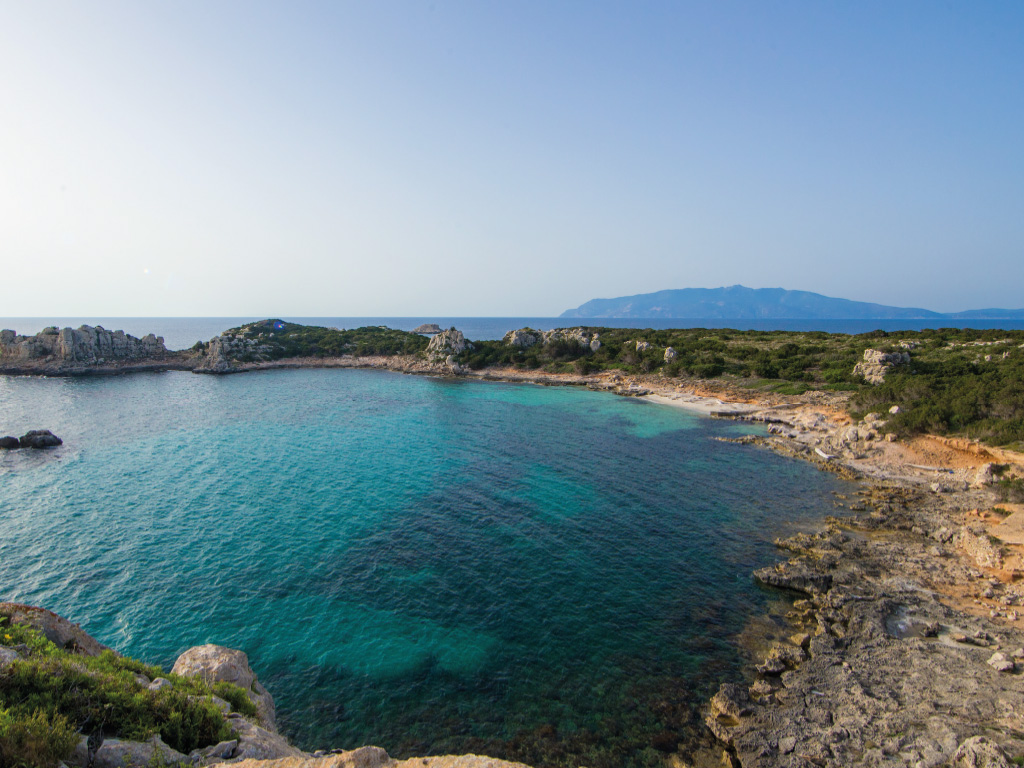Pianosa, l’isola “piatta” dell’Arcipelago Toscano, ha una storia complessa e affascinante. Da colonia agricola a carcere di massima sicurezza, l’isola ha conosciuto periodi di isolamento e abbandono, ma oggi si sta aprendo al turismo sostenibile, svelando la sua bellezza incontaminata e il suo ricco patrimonio storico. Alla fine del XIX secolo ospitava circa mille detenuti: nacque come carcere modello, suddiviso in diversi centri di produzione agricola, detti poderi, dove i reclusi coltivavano vino, cereali, legumi e ortaggi. Le coltivazioni servivano sia all’autosufficienza che alla vendita; si allevavano anche pollame e bovini. Negli anni ’80 divenne carcere di massima sicurezza, ospitando brigatisti rossi, capi mafiosi e terroristi. La vita dei detenuti era scandita dal lavoro e da un isolamento quasi totale. Il carcere fu chiuso nel 1998. Oggi Pianosa è un’isola aperta al turismo sostenibile: è possibile fare escursioni a piedi, in bicicletta, a cavallo o in carrozza, fare snorkeling e immersioni, visitare le catacombe o la Villa Romana appena restaurata, dove visse Agrippa Postumo. Da non perdere anche la Casa dell’Agronomo, restaurata dal Parco Nazionale dell’Arcipelago Toscano, e il museo archeologico, dove sono conservati numerosi reperti di ogni epoca provenienti da relitti e dagli scavi. Dal 2023 è possibile visitare anche un’ala del carcere, restaurata e allestita con cura, dove si raccontano le storie di quegli anni difficili. Per chi vuole vivere un’esperienza unica è possibile soggiornare nell’unico hotel con 12 camere e un ristorante-bar (attualmente chiuso), e visitare la sede dell’Associazione Amici di Pianosa, con una mostra permanente sulla storia del carcere, curata con passione dai volontari.
Pianosa has a complex, fascinating history. From being an agricultural penal colony to a maximum security prison, the island has known periods of isolation and abandonment but today it is opening up to sustainable tourism, revealing its wild, uncontaminated beauty and its rich historical heritage. By the end of the 19th century, there were almost a thousand inmates. It began as a model prison, divided into several agricultural production centres where the prisoners cultivated cereals, pulses and vegetables and made wine. Agricultural production was partly to create self-sufficiency and partly for sale. They reared poultry and cattle. In the 1980s, it became a very strict prison for those convicted of terrorism and organised crime. In 1998 the high-security prison was closed and a new period of rebirth began. Since last year, it has been possible to visit the prison, restored by the National Park, and to listen to the tales of those terrible years. Nowadays, Pianosa is an island open to sustainable tourism, with the opportunity of discovering its wild beauty and its rich historical heritage. It is possible to go hiking, cycling or have a trip in a carriage, go snorkelling and diving, or visit the catacombs or the newly restored Roman Villa where Agrippa Postumus once lived. The Agronomist’s House has recently been restored by the National Park of the Tuscan Archipelago and the Archaeological Museum, where numerous exhibits from all periods are saved, is also worth a visit.
Pianosa blickt auf eine komplexe und faszinierende Geschichte zurück. Von einer landwirtschaftlichen Strafkolonie bis hin zum Hochsicherheitsgefängnis hat die Insel Zeiten der Isolation und Verlassenheit erlebt. Heute öffnet sie sich dem nachhaltigen Tourismus und offenbart ihre unberührte Schönheit und ihr reiches historisches Erbe. Ende des 19. Jahrhunderts lebten hier fast tausend Häftlinge. Die Strafanstalt war in mehrere landwirtschaftliche Abschnitte unterteilt, in denen die Insassen Wein, Getreide, Hülsenfrüchte und Gemüse anbauten. Die Erzeugnisse dienten sowohl der Selbstversorgung als auch dem Verkauf. Zudem gab es Geflügel- und Rinderzucht. In den 1980er Jahren wurde das Gefängnis in eine Hochsicherheitsanstalt für Terroristen und Mafia-Bosse umgewandelt. 1998 wurde es geschlossen, und die Insel erwachte zu neuem Leben. Seit letztem Jahr ist es möglich, die von der PNAT restaurierte Strafanstalt zu besichtigen und die Geschichte dieser düsteren Zeit zu erfahren. Heute steht Pianosa für nachhaltigen Tourismus und bietet Besuchern zahlreiche Möglichkeiten, ihre unberührte Natur und ihr historisches Erbe zu entdecken. Wandern, Radfahren oder Kutschfahrten gehören ebenso zum Angebot wie geführte Besichtigungen der Katakomben oder der restaurierten römischen Villa, in der einst der Enkel des Augustus lebte. Auch Schnorcheln und Tauchen in den geschützten Gewässern sind beliebte Aktivitäten. Sehenswert sind auch die vom Nationalpark restaurierte Casa dell’Agronomo sowie das archäologische Museum, in dem zahlreiche Artefakte aus verschiedenen Epochen ausgestellt sind.

